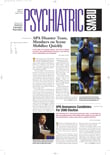“Rapid detox” using general anesthesia and high-dose naltrexone to treat individuals addicted to heroin is not more effective, and may be more dangerous, than alternative withdrawal strategies using buprenorphine or clonidine with naltrexone.
In what appears to be the most rigorous randomized trial yet of rapid detoxification for heroin addiction, researchers at Columbia University Medical Center found that the use of general anesthesia and high-dose naltrexone induction was not significantly better in terms of treatment retention or withdrawal symptoms than buprenorphine-assisted detox with naltrexone or clonidine-assisted detox with delayed naltrexone induction.
In addition, the rapid-detox strategy was associated with three potentially life-threatening adverse events, according to the report, which appeared in the August 24/31 Journal of the American Medical Association.
“In general, the data do not support using general anesthesia during detoxification,” said Herbert Kleber, M.D., vice chair of APA's Council on Addiction Psychiatry and a coauthor of the report. “The critical thing is not what happens during detox, but what happens after, and we found no difference between the groups. In addition, there were serious life-threatening adverse effects in the anesthesia group.”
Medically supervised heroin withdrawal is hindered by patient discomfort and high dropout rates. This has given rise to “rapid-detox” strategies in which very high doses of the opioid-antagonist naltrexone are given to patients under general anesthesia. Costing as much as $1,500, the strategy has been advertised as a fast, painless way to ease withdrawal from opioids.
“I have heard of people making significant financial sacrifices to have a son or a husband undergo this procedure in the hopes it will end the person's heroin addiction,” Kleber said. “But I see no evidence that they are using their financial resources with any better outcome.”
In the study, 106 treatment-seeking, heroin-dependent patients aged 21 through 50 years were randomly assigned to one of three withdrawal treatments over 72 hours, followed by 12 weeks of outpatient naltrexone maintenance with relapse prevention psychotherapy.
The treatments consisted of anesthesia-assisted rapid opioid detox with naltrexone induction, buprenorphine-assisted opioid detoxification with naltrexone induction, or clonidine-assisted opioid detox with delayed naltrexone induction.
The primary outcome measures were opioid withdrawal severity during the fourday inpatient phase of the trial, the proportion of patients completing inpatient detoxification, the proportion of patients receiving naltrexone induction (at any dose and at 50 mg), and the number of weeks completed in treatment.
Rates of naltrexone induction differed significantly across the groups: 33 of the 35 patients in the anesthesia group received the full 50-mg maintenance dose of naltrexone, compared with 27 out of 37 in the buprenorphine group, and six out of 34 in the clonidine group.
Treatment retention over the course of the study did not differ significantly across intervention groups. By week three more than 50 percent of patients had dropped out of each treatment arm. Among those who remained in treatment for 12 weeks, seven of the group's original 35 patients were in the anesthesia group, nine of 37 were in the buprenorphine group, and three of 34 were in the clonidine group.
Three patients in the anesthesia group experienced serious adverse events requiring hospitalization. One developed severe pulmonary edema and aspiration pneumonia approximately 14 hours after extubation. The second patient had concealed a history of bipolar illness during the screening process and about five days after anesthesia developed a mixed bipolar state with suicidal ideation. The third patient developed diabetic ketoacidosis two days after discharge.
“Anesthesia-assisted detoxification should have no significant role in the treatment of opioid dependence,” wrote Patrick G. O'Connor, M.D., M.P.H., in an editorial accompanying the JAMA report. “When detoxification is provided to patients, other approaches using clonidine, methadone, or buprenorphine are likely to be at least as effective as anesthesia-assisted detoxification and also are safer and far less costly.”
JAMA 2005 294 903
